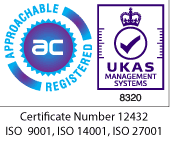PM2
Project Management
A full range of on-demand transition and transformation services
Transition & Transformation Services
PMaaS requires Highly Experienced professionals
But maintaining your own in-house team is expensive
There are three main problems faced by companies that are trying to scale and need a fully resourced project management team:
- Maintaining a full-time team of appropriately skilled and experienced project professionals is expensive
- Cost effective project managers often lack enhanced management skills
- Full outsourcing of project management can easily lead to a loss of quality and cost control
Our solution provides a team of highly experienced and on-demand programme and project professionals, offering a tailor-made, flexible, low risk solution.
Benefits to our Approach
Use our experts, when you need them
We give you the flexibility to resource your projects without maintaining an expensive full-time staff of skilled and experienced project managers.
We deliver our services through an on-demand model which scales to match your requirements. We can minimise your risk profile and provide day-to-day support and training.
From inception to service delivery, our Project Management as a Service model (PMaaS) is underpinned by our specialist methodology and tools.
Choose from a Full Range of Services
To create the solution you need
Portfolio Management
Portfolio management is the selection, prioritisation and control of all your programmes and projects, in line with their strategic objectives and capacity to deliver a successful outcome.
Programme Management as a Service
Our approach to Programme Management is holistic compared to traditional methodologies: it takes into account the interdependencies between projects and the overall impact of the programme.
Project Management as a Service
Our goal in Project Management is to optimise the entire process, promoting the most valued outcomes: increased efficiency, reduced risk, reduced cost, on-time completion and all targets met or exceeded.
Project Management Office as a Service
A Project Management Office (PMO) is complex to set up, but it provides a range of benefits: a clear set of standards to control & align your projects, improved communication and efficiency, regulatory compliance, reduced risk and greater innovation. Our consultants can help you avoid costly mistakes and put in place the infrastructure to reap all the benefits.
Risk Management
Risk Management is an ongoing process that needs to be reinforced regularly to give results. We can do this for you, embedding better risk management practices that future-proof your business against financial loss, reputational damage, and many other negative consequences.
Business Analyst
A professional service that helps organisations understand their business needs and translate them into specific requirements for IT solutions. Our Business Analysts work with a variety of stakeholders, including business users, IT professionals, and project managers.
Jason Jennings
Managing Partner - Project Management
Our Project Management capability is run by Jason Jennings
Jason is an advisor to numerous organisations and has extensive senior executive experience in the information and communications technology industry. He is the Managing Partner for Digital Transformation and lead for Cambridge MC’s Project Management as a Service capability.
Jason is a highly experienced CIO with strong commercial, business transformation and team building skills. He has a proven track record in delivering complex technology solutions for large international organisations across multiple territories. With demonstrable experience in delivering significant cost saving and improved technology-to-business alignment, Jason specialises in transformation, programme and project management, contract negotiation, outsourcing and interim management.
Our team can be your team
Our team of experts have multiple decades of experience across many different business environments and across various geographies.
We can build you a specialised team with the skillset and expertise required to meet the demands of your industry.
Our combination of expertise and an intelligent methodology is what realises tangible financial benefits for clients.
SPEAK TO THE TEAM
Our Project Management Experts
Martina Pavlaskova
Project Coordinator
Martina is a Process Specialist and works on a variety of complex projects around the world. Martina’s experience includes: the coordination of service delivery, mapping and documentation of processes, testing project architecture, mentoring and training, internal communications, and leadership.
Case Study
Cambridge MC delivered a future mode of network operations for BP
In support of the IT modernisation and digitisation strategy for BP, a network transformation was required to deliver a future mode of network operations, supporting agile working, automation, address End of Life component risks and deliver an upgraded network in order to improve user experience as well as aligning to the Cloud First and Mobile First corporate strategic imperatives.
We provided a Programme Manager to manage the execution of a Network Procurement Strategy, to propose an agreed reference architecture for the Next Generation Network to take advantage of Software-Defined WAN (SD-WAN) technologies and the adoption of Next Generation Office infrastructure (e.g., agile service management, orchestration, automation, virtualisation, etc) to deliver an evergreen, elastic, agile and globally consistent & secure set of Network Services.
"The Cambridge MC team have been instrumental in delivering a successful sales outcome for the Post Office Telecoms Business Unit”
—Director, Post Office Telecoms
"Instrumental in delivering a successful sales outcome"
Get in touch with our Consultants today
Industry insights

Case Studies
Our team has had the privilege of partnering with a diverse array of clients, from burgeoning startups to FTSE 100
companies. Each case study reflects our commitment to delivering tailored solutions that drive real business results.
CASE STUDIES
A little bit about Cambridge MC
Cambridge Management Consulting is a specialist consultancy drawing on an extensive global network of over 200 senior executives in 22 countries.
Our purpose is to help our clients make a better impact on the world.
ABOUT CAMBRIDGE MC

















